BLW Basics: Help! Nobody Around Me Understands Baby-Led Weaning
- Educate yourself about baby-led weaning
- Experience it with your baby without anyone else's intervention
- Explain what BLW is using simplified language
- Exhibit your baby self-feeding...seeing really is believing for others!
- Other BLW Made Easy podcast episodes that will help you if you're struggling feeling solo about your decision to do BLW:
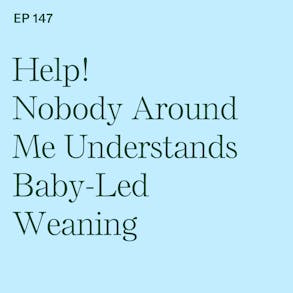
LISTEN TO THIS EPISODE
Episode Description
What if you are the only one who wants to do baby-led weaning? It can feel isolating when other people don’t understand why you are choosing to skip traditional spoon-feeding with your baby. There are many benefits to baby-led weaning, but helping others understand what those are can feel overwhelming.
In this episode I’m helping walk you through 4 essential steps for helping those around you understand the WHY when it comes to baby-led weaning. These are my “4 E’s for Easing Others into BLW”: Educate, Experience, Explain & Exhibit...and once you have them down, I know you’ll feel better about helping others understand why you’re taking this important step in your baby’s development.
Links from this Episode
- Gill Rapley’s original BLW book “Baby-Led Weaning: The Ultimate Guide” is available on Amazon here (this is an affiliate link)
- Baby-Led Weaning with Katie Ferraro program with the 100 First Foods™ Daily Meal Plan, join here: https://babyledweaning.co/program
- Baby-Led Weaning for Beginners free online workshop with 100 First Foods™ list to all attendees, register here: https://babyledweaning.co/baby-led-weaning-for-beginners
Other Episodes Related to this Topic
- Episode 1: What is Baby-Led Weaning?
- Episode 22: Grandparents, Spouses & Partners: Getting Others on Board with BLW
- Episode 25: Schedule for First 5 Days of Baby-Led Weaning
- Episode 138: Mom-Shaming: How to Deal When Others Don't Get Your Feeding Choices with Chriselle Lim

Latest Episodes
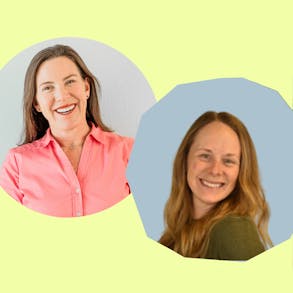
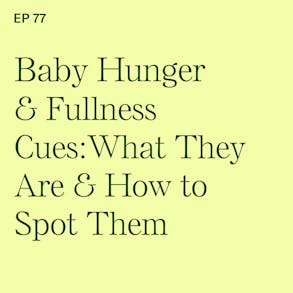
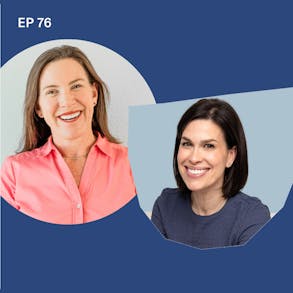
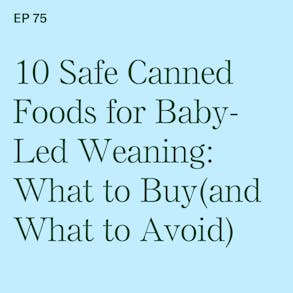
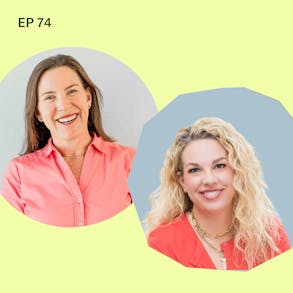
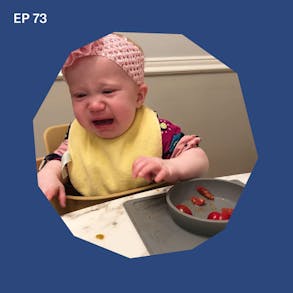
Katie Ferraro (1s):
You basically educate yourself about baby led weaning. You experienced baby led weaning with your baby. You then have the confidence to explain it to other people after which point, if you want to, you can exhibit how your baby does baby led me. Hey there! I'm Katie Ferraro, Registered Dietitian, college nutrition professor and mama of seven specializing in baby led weaning. Here on The Baby Led Weaning Made Easy Podcast, I help you strip out all of the noise and nonsense about feeding, leaving you with the competence and knowledge you need to give your baby a safe start to solid foods using baby led weaning.
Katie Ferraro (42s):
Hey guys, and welcome back! Today, we're talking about what do you do if nobody around you understands baby led weaning and you guys, I feel you so hard on this one because I remember personally like it was yesterday, the immense struggle that I felt about starting solids as a new mom with my oldest Molly, we did traditional spoon-feeding. She hated being fed. I hated feeding her. I felt like this abject failure as a parent, every time I went to feed her, because like, what kind of mom can't feed her own baby and what kind of dietitian mom is that? And when it came time to feed my next babies who were quadruplets, I'd already made the decision and done all the research. And we were going to go whole hog into baby led weaning. But guess what?
Katie Ferraro (1m 22s):
I didn't know how to explain why we were doing it. My mom and my pediatrician, my mother-in-law, they were all like, all right, when are we going to start iron fortified rice cereal? And people were like, when do you want me to come over and help you spoon feed the quads? And I said, no, we're not going to do that. And then they would say, why not? I said, because I'm not going to do that. I'm going to do baby led weaning. And they would say why? And I didn't really have an answer, but now having done baby led weaning with six of my seven own children. Having worked exclusively in baby led weaning for over five years as a dietitian specializing in this area and having helped now tens of thousands of your families, give your babies a safe start to solid foods. I do have a good way to explain why we're doing baby led weaning.
Katie Ferraro (2m 2s):
And that's exactly what I'm going to share with you inside of this episode. Now, I like to start all of these mini baby led weaning training episodes with a BLW tip of the day. And today's tip around this topic is you don't owe anyone an explanation as to why you are making the feeding choices that you are. Maybe you owe like an explanation at first to the partner, but I'll be honest in a lot of households. Like the person who's in charge of feeding is really the only one who cares about it. My own husband was like, do whatever you wanna do. Just make sure it's safe. I'm like, yeah. Okay. He used to walk into the room when I was feeding the twins, Gus and Hannah, there are six and seven kids and be like, are you sure the babies can eat that? Like, I don't think they can eat that. I was like, do you even know what I do for a living? Like he wasn't super interested in baby led weaning.
Katie Ferraro (2m 44s):
He was only ever interested in it when they started eating meat, because he's from Texas. He loves meat. He'd be like, what kind of meat are we going to feed them? So that's a different story for a different time. But I recently had Chriselle Lim on my podcast. I absolutely love hers in episode# 138. It was called Mom shaming - How to deal when others don't get your feeding choices, Chriselle Lim. We were talking about this idea like everyone today, if you have any sort of a platform thinks they owe you an explanation for everything and your platform might just be your own family. And you might be the first person they've ever seen, not traditionally push spoonfuls of period food into a baby's mouth. And so go back and listen to that episode. If you're feeling like a lot of pressure from the outside world about, you know, how we do our feeding choices. This particular episode is about how you can explain it.
Katie Ferraro (3m 25s):
But that episode # 138 with Chriselle, which is kind of about this larger discussion about everybody feels like their own explanation as to why you're making the decisions that you are, but you don't have to make an explanation. You don't owe anyone an explanation. I have what I call the 4 E's to understanding baby led weaning. And I'm going to share them with you. In this episode, you basically educate yourself about baby led weaning. You experienced baby led weaning with your baby. You then have the confidence to explain it to other people after which point, if you want to, you can exhibit how your baby does baby led weaning, but you've got to go in that order. It's hard to show baby led weaning. If you don't know what it is or they don't know what it is or you've never experienced it. So we want to go in order educate, experience, explain, and then exhibit the 4Es of helping someone understand baby led weaning.
Katie Ferraro (4m 13s):
Hang tight! I'm going to explain each of those E's in a second as we go through the content in today's episode, but the whole point today is to help you when no one else around you understands baby led weaning, how do you cope and then how do you respond and react? These are some tips that might work for you. So let's get started with the first E of helping those around you understand baby led weaning. And that is to educate yourself. I highly suggest if you have not already read Gill Rapley, baby led weaning book that you do. Gill Rapley is the founding philosopher of the baby led weaning movement. She's the baby led weaning godmother. The guru. Every time we speak, she says, I don't want you to say I invented baby led weaning. I just gave it a name. So if you want to hear the history of how Gill rapidly came to create this philosophy and movement known as baby led weaning, go listen to episode# 100.
Katie Ferraro (5m 1s):
That was an interview that I did with Gill. It's rather lengthy, but it's all about the history of baby led weaning with Gill rapidly. And then episode#102, she came back and we talked about the future of baby led weaning. Again, this is with the founding philosopher, Gill Rapley. There's so much misinformation about baby led weaning out there. We want to learn from the person who created it, what baby led weaning is all about. Make sure you read her book. And if you are looking for Gill Radley's books, she actually, she said the other day, gosh, there's so many baby led weaning books out there, which is great, except that I feel like the original one that she co-wrote with Tracy Murkette, that it kind of gets lost in the sea. So you've got to find Gill Rapley's book, read it, make sure you're reading the version of it,that was completely overhauled for the 10th anniversary.
Katie Ferraro (5m 47s):
You don't want to be reading an older version of it because she included some of the newer research in philosophy in the revised edition. So again, read Gill Rapley, baby led weaning book so that you truly understand the philosophy of baby led weaning. It's very, very interesting. It's a great read. It will just open your eyes up to why we are doing baby led weaning as part of the education component. I would also encourage you to take my baby led weaning for beginners workshop. I've got 60 minutes of a presentation that I show you the basics the first few days of baby led weaning, how you can incorporate even purees for a few days. If you want to doing a preloaded spoon, some ideas of foods to feed, what to expect, get over your fear of gagging, like we're hitting all the pain points in 60 minutes.
Katie Ferraro (6m 27s):
And then I do a 30 minute Q and A at the end of that workshop as well. Everyone on my free baby led weaning for beginners workshop gets a copy of my 100 first foods list. So you'll never worry about which foods to feed your baby. You can sign up for this week's workshop times. If you go to the show notes page for this episode, which is at BLWpodcast.com/147. So the first E in getting your head wrapped around this is to educate yourself. The second E to experience it when you can, baby is 6 months of age or 6 months adjusted if your baby was born prematurely and your baby is showing reliable signs of readiness to self feed, and you start baby led weaning, do it by yourself. Don't make a party out of it. Don't invite a bunch of people over, don't let the dog in the room.
Katie Ferraro (7m 8s):
If you've got older kids try to keep them out of there , someone else's watching them. But you want to be there as the primary feeder doing one new food a day with your baby. Now in the first week, try to do 5 new foods. I have a podcast episode called Schedule for the first 5 days of baby led weaning, it's episode 25. Go listen to that if you need ideas of how to start. But if after 5 days you have done 5 foods feed your baby 15 to 20 minutes in a single feeding, try to do it 1-2 times a day. If you can, if you do it 2 times a day and you do it for 5 days, your baby will have tried 5 new foods. You will have had 10 feeding experiences. I promise you even if they don't eat very much, which they don't early on in baby led weaning your level of confidence in your baby's ability to do this by themselves will be so much higher than it was on day 0.
Katie Ferraro (7m 56s):
So the second E is do experience it do 1 week by herself, 5 new foods with your baby 2 times a day. If you can, you will be confident in your baby's ability to self feed. You won't have figured it all out, but having that experience on your own is the important second step after educating yourself. The third E is to explain if someone else is asking you, and you've been doing this for a little while, what is baby led weaning? Here are some suggested ways that you can explain it. Baby led weaning is an alternative to traditional spoon-feeding. It is an extension of the same responsive feeding techniques that you used in the first 6 months of your baby's life. We are honoring our baby's inborn abilities to feed themselves.
Katie Ferraro (8m 38s):
Our babies can eat so many more foods than we give them credit for. We just have to wait until they're ready and we have to offer the right types of foods. So it's our job to set them up for safety and set them up for success. If you can explain what baby led weaning is. Another way I explain it is baby led weaning is where you skip traditional spoon-feeding and you allow babies to feed themselves safe, wholesome age appropriate finger foods from their first bites. People say, why do you do baby led weaning? Well, because it's an extension of the same responsive feeding techniques that we've been doing with, with breastfeeding, right? When your baby's full and they turn their face away from the breastfeeding, oh, they're done. And we don't make them eat anymore.
Katie Ferraro (9m 20s):
We don't want to override the inborn's ability for babies to know when they're full. We want to honor that. And so by allowing them to pace their own intake, we're doing just that. Baby led weaning does not put your baby at any higher risk of choking. If people ask you about that, it doesn't lead to any growth faltering or a nutrient gap. Got a whole podcast episode all about the research behind baby led weaning. This is an interview with Amy Brown, a wonderful baby led weaning researcher out of the UK. Episode# 70 is called The Evidence Behind The Baby Led Weaning with Amy Brown, PhD. Go and listen to that for some more reasons, if you need more convincing about why this is a safe and viable alternative to traditional spoon-feeding.
Katie Ferraro (10m 1s):
Because if we think of traditional spoon-feeding in the sense that it's essentially force feeding. Okay, if we start even using that language, I've increasingly been referring to traditional spoon-feeding has forced feeding because that's what we're doing. Okay. We're taking the force out of it. The force is the parents, we're not doing parent led spoon feeding, we're doing baby led weaning. We can teach you how to incorporate purees on a preloaded spoon, and purees can be compatible to some degree with baby led weaning, but we have to do it safely. After you can explain baby led weaning, if you feel comfortable, you might exhibit how your baby does baby led weaning. Seeing really is believing when it comes to baby led weaning. People will say, yeah, yeah, yeah, yeah.
Katie Ferraro (10m 42s):
Sure, sure, sure, sure. And then the second they see your baby picking up beets or feeding themselves sardines or trying meat in the first week that they've had solid foods. They're amazed by it. So don't underestimate the power of the visual. My suggestion has always defined those foods that your baby's really good at. Like there's some that they definitely are going to like more than others. Put those in your back pocket, not literally, figuratively and save them for when you're trying to demonstrate what baby led weaning is. And this works great at daycare. This works great at holidays. This works great if you're at a friend's house. I'm like, whoa, hold up, is that baby feeding themselves? Y E S, they are.
Katie Ferraro (11m 23s):
The people, who doubted baby led weaning, instantaneously become believers when they see your baby doing something that they didn't think was possible. Episode #22 of the podcast was called Grandparents, Spouses, and Partners, Getting Others On Board with BLW. Again, it's episode #22, check that out. It's a great summary of this process of slowly inviting others in to view your baby eating baby led weaning. Remember you don't owe them the viewing experience until you've educated yourself. You've experienced it yourself. You've explained why you're doing it. And then the icing on the cake is allowing someone else to watch your baby eats. And then it's all clicks. And they're like, oh, I get it. We do also want to mention if someone's interested and they want to talk about how you're feeding your baby, that baby led weaning helps you raise an independent eater.
Katie Ferraro (12m 11s):
If you notice, I always avoid the use of the term healthy eater or happy eater. Okay? That's not the goal here. Those are very, very subjective measurements. What I want to know is can the baby independently feed themselves? Yes or no. If our goal at 1 year of age is to have the babies sitting at the table, eating modified versions of the same foods, the rest of the family eats. They don't magically wake up on their first birthday and know how to do that. The baby led weaning period from 6 to 12 months is this continuum. It's this period of time, where baby is gradually learning how to add different steps in the learning to feed process. And it all comes together and culminates with around 1 year of age, they get more nutrition from food than they do from milk.
Katie Ferraro (12m 51s):
Okay? That's the point of baby led weaning and action. We're helping to raise an independent eater. And baby led weaning also helps prevent picky eating. There's some degree of picky eating that will set in in the second year of life for all children. But the degree of picky eating and the severity of picky eating can be mitigated or can be mediated. And we know that babies, who are exposed to the greatest number of foods and flavors and tastes and textures early and often, they're more likely to be independent eaters and less likely to be picky eaters. If your baby is a traditionally spoon fed baby, they will have around 10 to 15 foods under their belt by the time they turn one. If you lose those 10 to 15 foods to picky eating in the second year of life, you are up a creek. That is a very challenging child to feed.
Katie Ferraro (13m 31s):
But if your baby can eat a hundred foods and you take advantage of this honeymoon feeding phase, I like to call it the period between 6 and even past 12 months of age, where babies will learn to like and accept and try a whole variety of foods. And your baby eats a hundred foods by the time they turn 1, and then you lose 10 or 15 foods to pick eating no big deal, right? Because you still have 85 or 90 foods that your baby will eat. So again, if we can follow that process of educating ourselves, experiencing baby led weaning ourselves, explaining it to others and then exhibiting to others, what it looks like we can help other people around us understand baby led weaning. If you guys want to grab a copy of my a hundred first foods list, again, it's on the free workshop that I teach every week called baby led weaning for beginners, you can sign up for that workshop at the show notes for this episode at BLWpodcast.com/147.
Katie Ferraro (14m 18s):
And I'll also link to all of the other episodes and resources that I talked about in today's episode, including Gill Rapley, baby led weaning book, first and foremost, make sure you read that one. Thanks so much for listening and I'll catch you next time. Bye now.
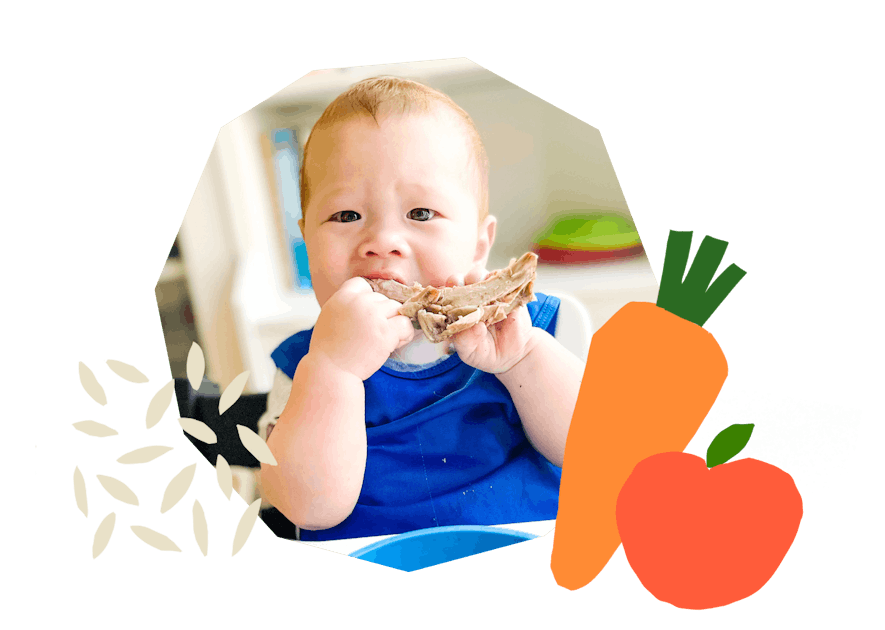
The Program Baby-Led Weaning with Katie Ferraro
A step-by-step digital program for starting solid foods safely and navigating the original 100 FIRST FOODS™ meal plan with baby-led weaning.
 EXPERT-LED, PROVEN APPROACH TO EATING REAL FOOD
EXPERT-LED, PROVEN APPROACH TO EATING REAL FOOD CONCISE VIDEO TRAININGS TO MASTER BABY-LED WEANING
CONCISE VIDEO TRAININGS TO MASTER BABY-LED WEANING 100 FIRST FOODS DAILY MEAL PLAN WITH FOOD PREP VIDEOS
100 FIRST FOODS DAILY MEAL PLAN WITH FOOD PREP VIDEOS
Baby-Led Weaning for Beginners Free Workshop
Is your baby ready to start solid foods, but you’re not sure where to start? Get ready to give your baby a solid foundation to a lifetime of loving real food…even if you’re feeling overwhelmed or confused about this next stage of infant feeding.
Get baby-led weaning recipes and tips delivered to your email inbox.

